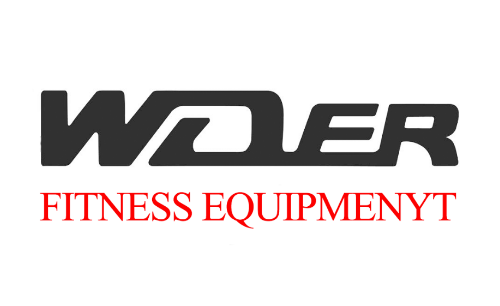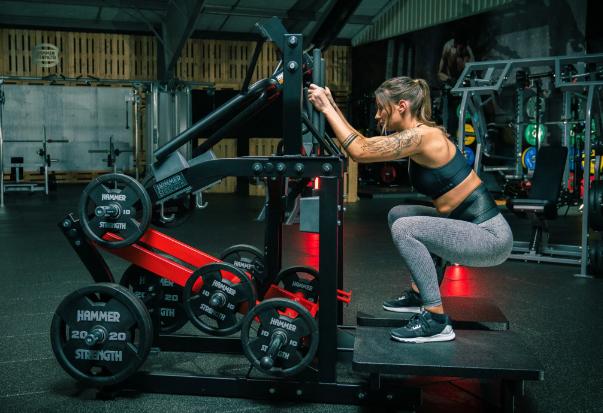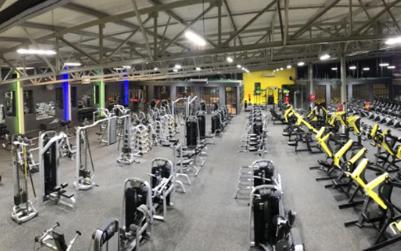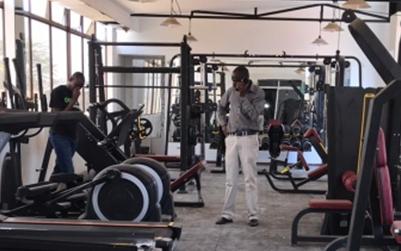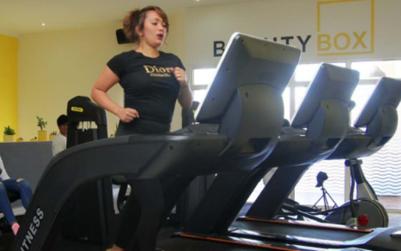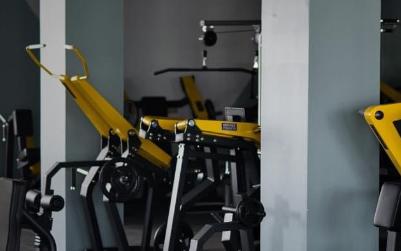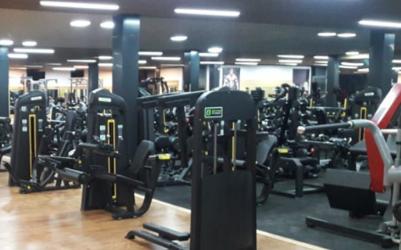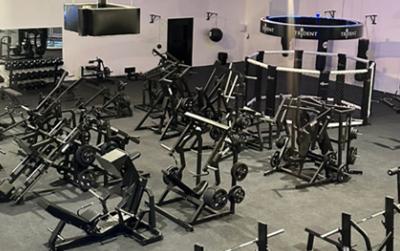How to Ensure Your Gym Equipment Maintenance is Effective
To maintain the longevity and performance of gym equipment, effective maintenance is essential. A well-maintained gym not only enhances user safety but also improves equipment performance and extends its overall lifespan. Here are some key strategies to ensure your gym equipment maintenance is both efficient and effective.
Establish a Routine Maintenance Schedule
One of the most critical aspects of gym equipment maintenance is establishing a routine schedule that covers all equipment in your facility. Regular inspections and preventive maintenance can prevent minor issues from becoming major problems.
- Daily Maintenance: Check and clean frequently used equipment. This includes wiping down machines after use to remove sweat and prevent rusting.
- Weekly Maintenance: Inspect moving parts for any wear and tear. Tighten loose bolts and screws, and replace any worn-out parts as needed.
- Monthly Maintenance: Conduct a more thorough inspection of all equipment. This should involve checking electrical components, inspecting cables and bearings, and lubricating parts where necessary.
Keep a Maintenance Log
Logging all maintenance activities is vital for tracking the history and condition of your equipment. A well-maintained log can help identify trends over time, allowing you to spot recurring issues and address them promptly.
- Record Dates: Note the date of each maintenance activity, including inspections, repairs, and replacements.
- Detail Activities: Write down what was checked, lubricated, or replaced during each maintenance session.
- Track Equipment Usage: Monitor how often each piece of equipment is used, as higher usage may require more frequent maintenance.
Utilize Professional Services for Complex Repairs
While basic maintenance can be handled in-house, complex repairs or equipment setups often require professional expertise. Engaging with certified technicians ensures that your equipment is serviced correctly, reducing the risk of accidents and further damage.
- Schedule Certified Inspections: Having professionals check your equipment can uncover hidden issues that might not be visible to the untrained eye.
- Request Training: Ask professionals to provide staff training on how to properly handle equipment maintenance and troubleshooting.
- Utilize Warranties: Make sure to understand and utilize manufacturer warranties and service contracts whenever possible.
Invest in Quality Products
Using high-quality equipment and maintenance supplies can significantly reduce the frequency of repairs and maintenance needs. When purchasing gym equipment, consider the following factors:
- Brand Reputation: Opt for equipment from reputable brands known for durability and reliability.
- Warranty Options: Look for products that come with a comprehensive warranty, indicating confidence in their durability.
- User Reviews: Check customer feedback to gauge long-term performance and common problems associated with specific equipment.
In conclusion, effective gym equipment maintenance doesn’t just rely on regular checks; it also encompasses thorough documentation, the use of professional services, and investing in high-quality equipment. By implementing these strategies, gym owners and managers can ensure a safer, more efficient environment for their users while maximizing the lifespan of their equipment. Prioritizing maintenance will ultimately pay off in improved performance and member satisfaction.
The Importance of Regular Gym Equipment Maintenance
When it comes to a successful fitness journey, having well-functioning gym equipment is paramount. Regular gym equipment maintenance is crucial not just for the longevity of the equipment, but also for the safety and satisfaction of the users. Failing to maintain gym machinery can result in unexpected breakdowns, injuries, and an overall negative experience. Below, we delve into the key reasons why maintaining your gym equipment should be a top priority.
Enhancing Safety for Users
One of the primary reasons to focus on regular gym equipment maintenance is the safety of its users. Well-maintained equipment minimizes the risk of accidents and injuries. Here are a few safety aspects to consider:
- Stable and Secure Machinery: Regular checks can identify loose bolts, worn-out parts, or frayed cables that could pose a hazard.
- Cleanliness: Proper maintenance includes keeping the equipment clean, which can help prevent the spread of germs and maintain a hygienic workout environment.
- Operational Efficiency: Faulty equipment can malfunction during usage. Routine maintenance ensures everything is functioning as it should, reducing the chance of accidents.
Maximizing Equipment Lifespan
Every piece of equipment has a finite lifespan, but consistent care can significantly extend its usability. Regular maintenance helps to:
- Identify Wear and Tear: Frequent checks can highlight wear on key components, allowing for timely replacements before they lead to major failures.
- Reduce Long-term Costs: Investing in periodic maintenance can save substantial costs over time by reducing the need for complete equipment replacements.
- Maintain Warranty Compliance: Many manufacturers require proof of maintenance for warranty coverage. Regular upkeep ensures you're protected in case of defects.
Improving Performance and User Experience
Fitness enthusiasts expect a certain standard from gym equipment. Regular maintenance contributes to an enhanced experience by:
- Optimizing Functionality: Properly tuned machines operate smoother, providing users with more effective workouts.
- Ensuring Variety: Well-maintained equipment can withstand a range of exercises, allowing for diverse training options without equipment failure.
- Positive Gym Environment: A clean, efficient gym with well-maintained equipment reflects professionalism and can attract more members.
Setting a Standard in the Fitness Industry
For gym owners and managers, committing to regular gym equipment maintenance sets a positive industry standard that resonates with members. Here’s how:
- Building Trust: When users see that equipment is well-maintained, it builds trust in the gym’s commitment to quality and safety.
- Attracting Members: A reputation for cleanliness and reliability can be a deciding factor for potential members comparing gyms.
- Increasing Retention: Satisfied users are more likely to return. Maintaining equipment plays a vital role in overall satisfaction and member retention.
In conclusion, regular gym equipment maintenance is not merely an option but a necessity for ensuring safety, extending the equipment's lifespan, and enhancing the user experience. It also sets benchmarks for industry standards that reflect a gym's commitment to quality and professionalism. Therefore, both gym owners and home users should prioritize maintenance routines to enjoy optimal performance and peace of mind.
What You Need to Know About Essential Gym Equipment Maintenance
Maintaining gym equipment is crucial for ensuring safety, longevity, and optimal performance. Whether you are a gym owner or a fitness enthusiast, understanding the basics of gym equipment maintenance can help you conserve resources and provide a better workout environment. Here, we will cover essential aspects of gym equipment maintenance that everyone should know.
The Importance of Regular Maintenance
Regular maintenance of gym equipment not only extends its lifespan but also enhances user experience. Here are some reasons why consistent maintenance should be a priority:
- Safety: Well-maintained equipment reduces the risk of accidents and injuries.
- Performance: Properly functioning machines deliver better performance and results.
- Cost-Effective: Routine maintenance can prevent costly repairs or replacements down the line.
- Hygiene: Regular cleaning helps maintain a hygienic environment, reducing the spread of germs.
Basic Maintenance Tasks to Consider
While the specific maintenance tasks may vary depending on the type of equipment, there are common activities that should be performed routinely:
- Cleaning: Wipe down machines after each use with disinfectant wipes to prevent sweat and grime build-up.
- Lubrication: Keep moving parts properly lubricated to ensure smooth operation and reduce wear and tear.
- Inspection: Regularly inspect equipment for signs of damage or wear, such as frayed cables or loose bolts.
- Tightening Bolts: Periodically check and tighten bolts and screws to maintain the structural integrity of machines.
Specific Maintenance for Different Equipment Types
Different types of gym equipment require specific maintenance approaches. Here are some general guidelines:
- Cardio Equipment:
- Check belts for wear and tear.
- Inspect the electronics and screens for any malfunction.
- Clean the contact points to ensure accurate heart rate readings.
- Weight Machines:
- Ensure weights are secured and not loose.
- Inspect cables and pulleys for signs of wear.
- Check that seat adjustments and locks function correctly.
- Free Weights:
- Regularly inspect barbells and dumbbells for rust or damage.
- Store weights in designated areas to prevent accidents.
- Keep the lifting area clear of debris and clutter.
Creating a Maintenance Schedule
Establishing a consistent maintenance schedule is a proven method for keeping gym equipment in optimal condition. Consider the following steps:
- Develop a weekly, monthly, and annual checklist for different types of equipment.
- Assign responsibilities to staff or set reminders for yourself.
- Document all maintenance actions taken to identify patterns and areas for improvement.
In conclusion, the importance of essential gym equipment maintenance cannot be overstated. By prioritizing regular upkeep, properly addressing specific maintenance needs per equipment type, and creating a structured schedule, you can enhance safety, performance, and the overall gym experience. Investing time and effort into maintenance will yield long-term benefits for both gym owners and fitness enthusiasts alike, ensuring that your equipment remains a reliable partner on the quest for health and fitness.
Top Tips for Gym Equipment Maintenance to Extend Lifespan and Performance
Maintaining gym equipment is crucial for ensuring safety, optimizing performance, and extending the life of your machines. Regular maintenance not only keeps your equipment in top condition but also enhances the workout experience for everyone using it. Below are some essential tips for effective gym equipment maintenance.
Regular Cleaning is Key
One of the simplest yet most effective ways to maintain gym equipment is through regular cleaning. Sweat, dirt, and oils can accumulate on surfaces, leading to potential damage over time.
- Daily Wipe-Down: After each use, individuals should wipe down machines and free weights with disinfecting wipes or a clean cloth.
- Weekly Deep Clean: Schedule a weekly deep clean for equipment, including vacuuming around machines and cleaning harder-to-reach spots.
- Use Proper Cleaning Products: Always use appropriate cleaning solutions that are safe for the materials of your equipment to avoid damage.
Inspect and Address Wear and Tear
Frequent inspections of gym equipment can help detect and address potential issues before they lead to more significant problems. Being proactive can save time and money in the long run.
- Visual Inspections: Conduct regular checks for visible signs of wear, such as frayed cables, cracks, or rust on metal parts.
- Listen for Unusual Sounds: Be attentive to any strange noises during operation, as they may indicate mechanical issues that require attention.
- Check for Loose Parts: Make it a habit to check bolts, nuts, and other fasteners to ensure everything is securely tightened.
Perform Routine Maintenance
Routine maintenance tasks help keep gym equipment in optimal working order. Based on the type of equipment, the recommended maintenance frequency can vary.
- Lubrication: Regularly lubricate moving parts, such as cables and pivot points, to reduce wear and friction.
- Calibrate Machines: For cardio machines such as treadmills and ellipticals, calibrate settings to ensure accurate readings and performance.
- Update Software: Many modern gym machines have software that may require updates for optimal performance and new features.
Educate Staff and Users
A crucial part of gym equipment maintenance is ensuring that both staff and users understand how to handle the machines properly.
- Training Staff: Regularly train staff on maintenance procedures, safety checks, and how to guide users on proper equipment use.
- User Guidelines: Post clear usage guidelines near machines to encourage responsible use, helping to prevent misuse that can lead to damage.
- Encourage Feedback: Create an open line of communication allowing users to report any issues or concerns regarding equipment.
Incorporating these tips into your gym routine not only preserves your equipment but also promotes a safer and more enjoyable workout environment. Investing time and effort into gym equipment maintenance will ensure your facility continues to serve its members effectively while minimizing costly repairs and replacements. Remember, a well-maintained gym is a happy gym!
